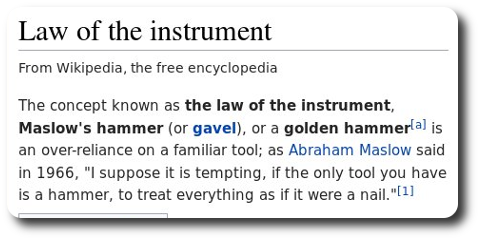
 Reference: Law of the instrument
Reference: Law of the instrument
CHERRY-PICKING is somewhat of an art form in legal blogs. They so often altogether ignore cases/decisions that don't bolster the narrative which they promote and simply act as a megaphone when the exceptions occur.
A Patent Trial and Appeal Board finding of unpatentability for obviousness based on two prior-art references in Personal Web Technologies v Apple has been remanded because “the Board did not adequately support its findings”
Patents: Understanding Software Inventions in India and US
[...]
The Indian patent law does not provide a proper definition of the term ‘software’ or ‘computer program’. But, under the section 2 of the Copyright Act, 1957 a computer program is defined as “a set of instructions expressed in words, codes, schemes or in any other form, including a machine readable medium, capable of causing a computer to perform a particular task or achieve a particular result”. Section 3 of the Indian Patent Act, 1970 summarizes about the inventions that are not patentable. In particular, Section 3(k) of the Patents Act excludes mathematical methods, business methods, computer program per se and algorithms from the patentable subject matter. According to the Computer Related Inventions (CRI) guidelines issued by the Office of the Controller General of Patents, Designs and Trademarks on 19th February, 2016, the computer program in itself is never patentable. The Examiners are advised to deny the claims if the contribution lies only in mathematical method, business method or algorithm. However, software can be patented in India if the software is in conjunction with a new hardware. In other words, the software must be in relation to a specific hardware (a device or apparatus) and the claims will include the device or apparatus used in conjunction with the software. Inventions that are combined with hardware and software features that are inventive, novel and hold industrial applicability are patentable.
One group of prolific innovators, however, has been largely ignored by history: black inventors born or forced into American slavery. Though U.S. patent law was created with color-blind language to foster innovation, the patent system consistently excluded these inventors from recognition.
As a law professor and a licensed patent attorney, I understand both the importance of protecting inventions and the negative impact of being unable to use the law to do so. But despite patents being largely out of reach to them throughout early U.S. history, both slaves and free African-Americans did invent and innovate.